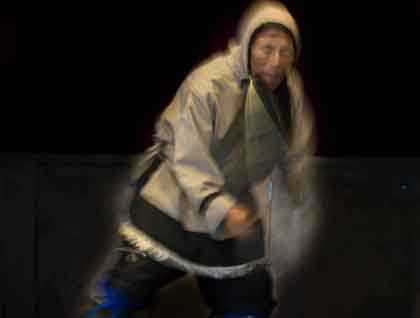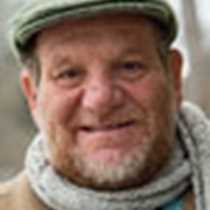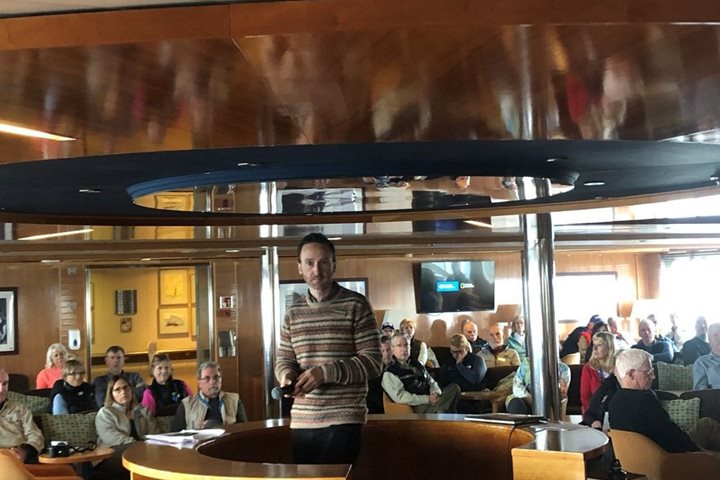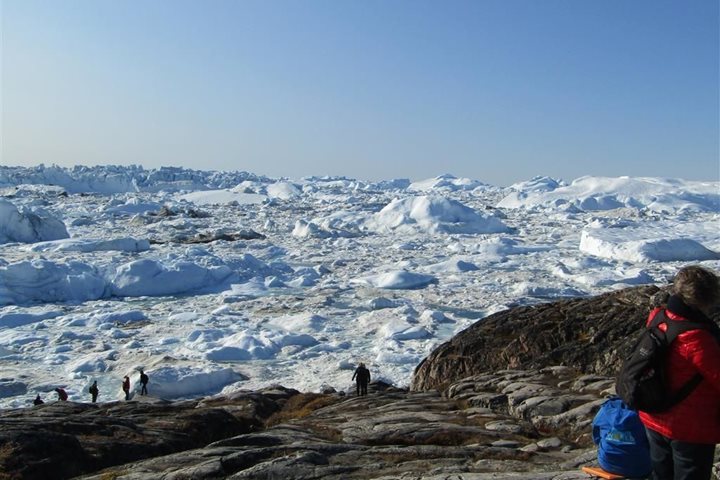As we headed into Pond Inlet a thick layer of fog blanketed the sea. Icebergs, although smaller than the ones we have been viewing over the past few days, still held us in fascination as they stood like sentinels along our pathway in the sea. Pond Inlet is a small hamlet located at the top of Baffin Island and although small from most standards, it is the largest of the four communities above the 72nd parallel. For us, the life of the Inuit people who live here is hard to imagine. A life where the ocean around them is free of ice for only about three and a half months of the year, where the winters are long and dark, and the summers are short and filled with light for all hours of the day. As different a life as the Inuit have from us now, it was even more so when the people here were nomadic, and life in the far north was even more distant from what we can imagine. Now, the Inuit are a people caught between a life completely interwoven with the natural world around them, and a standard of life that modern society feels is appropriate for all people to abide by, living in a mixed subsistence economy.
Before any visit to the tiny hamlet would happen we would first need to clear Canadian Customs and Immigrations, and as one would imagine that clearing the entire capacity of guests, crew, and staff, as well as all of the provisions and equipment an operation such as National Geographic Explorer took some time. Our time in Pond would be an afternoon excursion. Even after checking passports and manifests there was still an officer of Transport Canada waiting for all of us on shore. This final checking of ID’s complete we were greeted by some of the happiest people we could have imagined. We divided into groups, with some opting for a longer hike onto the tundra, while others choose a town walk with visits to the library/museum, and then a performance of traditional native games, drumming, and throat singing. At first glance Pond Inlet seems like a rather dismal place to live. The streets are packed dirt and dusty and you quickly learned to cover your mouth and nose every time a vehicle passed by. Then, we entered the iceberg-shaped Library that also housed a remarkable museum with dioramas, and the offering of delicious bannock, the native bread of the north. One of the rangers from Parks Canada gave a wonderful presentation of seal hunting, and its importance to the people who have depended on seals as sustenance for their entire existence. We were treated as though we were all old friends and the beauty of Pond Inlet was becoming more apparent.
After our time in the museum we were treated to the highlight of the day, the performance of the local people whom would drum, dance, and sing themselves into our hearts. From the first note of the Canadian national anthem, to the last dance of the entire troupe of performers we were captivated. A demonstration of native games astounded us as the two men show incredible strength and limberness as they performed feats that the rest of us could only dream about ever doing. A village elder told stories as a native drummer played his instrument and dance along with the rhythm. Then the drummer did his solo performance and this above all was my personal favorite. I never realized that a single drum could produce a rhythm so melodic, and the accompanying dance was as fluid as the waves in the ocean surrounding the village. Lastly, women throat singers, which is a specialty of Inuit women, sang beautiful songs with sounds that mimicked the animals of importance to their native culture. What a wonderful introduction to the first people of the Canadian arctic and their beautiful community of Pond Inlet.







